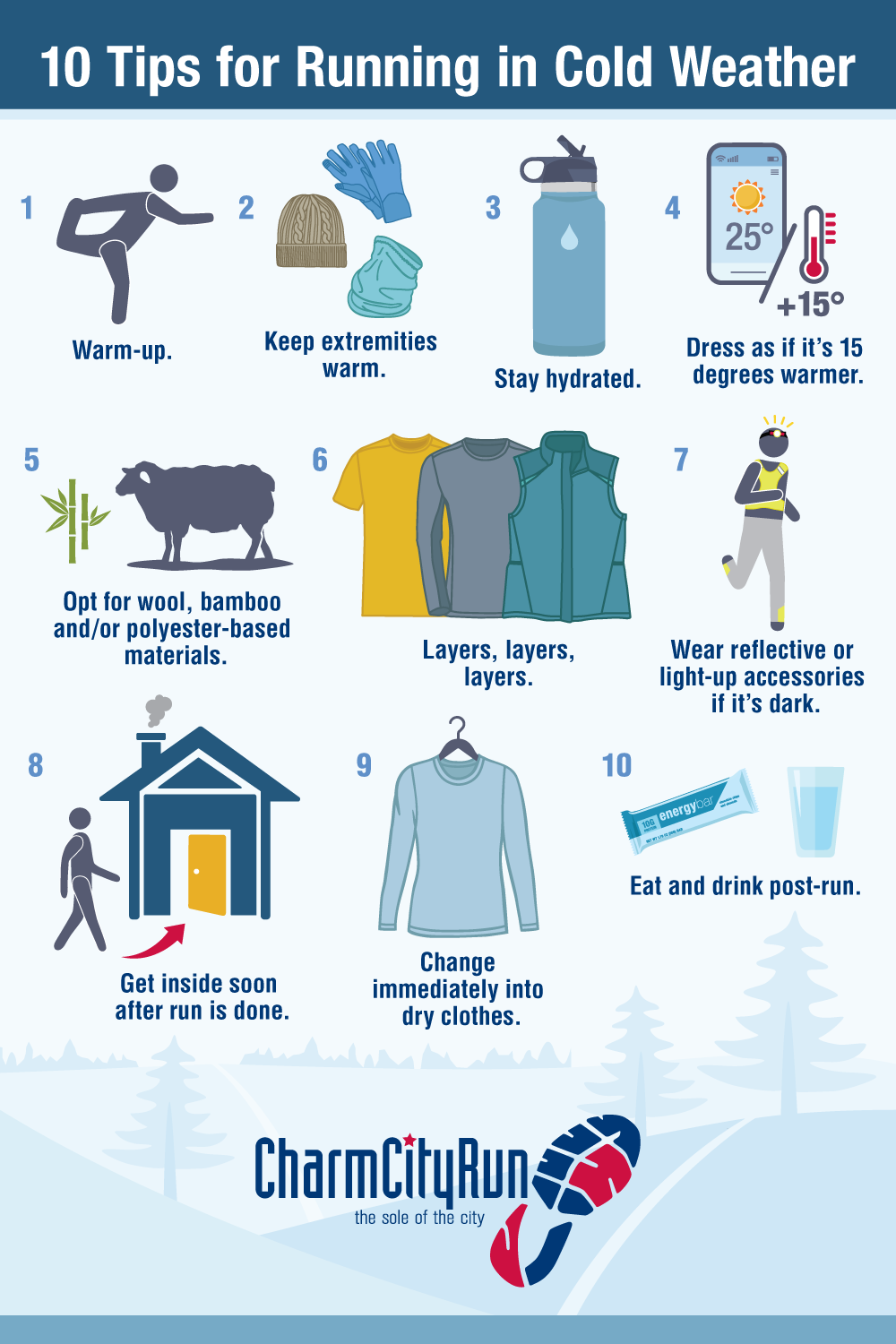
Don’t let the colder temps keep you from your outdoor runs!
Wednesday, December 15, 2021
As long as it’s above 0 degrees Fahrenheit (we don’t want anyone getting frostbite!), then you can continue to run outdoors. In general, it’s actually easier on your body to run in cooler weather. After is passes 60 degrees—it gets tougher for your body as it gets warmer. Plus, you don’t have to wake up at 4AM to beat the heat!
But we know, it feels so COLD, therefore our Charm City Run Training Coaches have pulled together helpful tips to help you both enjoy and be more successful with these chillier runs.
-
Warm-up: Get your core temperature up with dynamic flexibility (stretching) and an activity like jumping jacks.
-
Keep extremities warm: Make sure to wear hats, gloves and wool or poly-based socks (no cotton). If it’s REALLY cold, then you can use handwarmers in your gloves and toasty toes inserts in your shoes (over socks).
-
Stay hydrated: Remember, you are still sweating and should consume water before and after running. Winter air is usually dry and can dehydrate you through breathing. Layers of technical apparel may hide how much sweat you are actually generating.
-
For long distances, hot/warm sports drinks are a “treat” you can take with you for salt/sugar, and fluid replacement.
-
Like other long runs, a general rule is about 10 – 25 oz of fluid per hour spent running.
-
-
Dress as if it is 15-20 degrees warmer: Your body will quickly get warmer as you begin running and you don’t want to overheat, which can lead to dehydration.
-
Don’t wear cotton. Instead, choose wool, bamboo and polyester-based materials for all your layers (socks, tops, bottoms, everything). Wool socks are wonderful for running in colder temperatures.
-
-
40 degrees: Short-sleeve with light half zip or long-sleeve top, capris or shorts for girls, shorts with wicking brief or 2-in-1 shorts for guys, light gloves and a hat if prone to a cold head (thinner/no hair).
-
30 degrees: Long-sleeve base layer and a vest or light jacket. Tights (or shorts, for brave souls). Gloves and a hat or headband.
-
10 to 20 degrees: A jacket over your base layer, and tights with extra thermal or run pants with compression shorts for guys. Mittens and a hat.
-
0 to 10 degrees: Baselayer with a half-zip, jacket or vest. Thermal tights or pants.
-
-
Wear reflective or light-up accessories if it’s dark: There is less daylight in the winter so stay safe and make sure you are very visible at all times.
-
Get inside soon after run is done.
-
Change immediately into dry clothes.
-
Recover nutritionally: Post-run make sure that in addition to hydrating, you are nourishing your body.
Lastly, we always recommend (anytime of year) signing up for a race to help keep you motivated!

